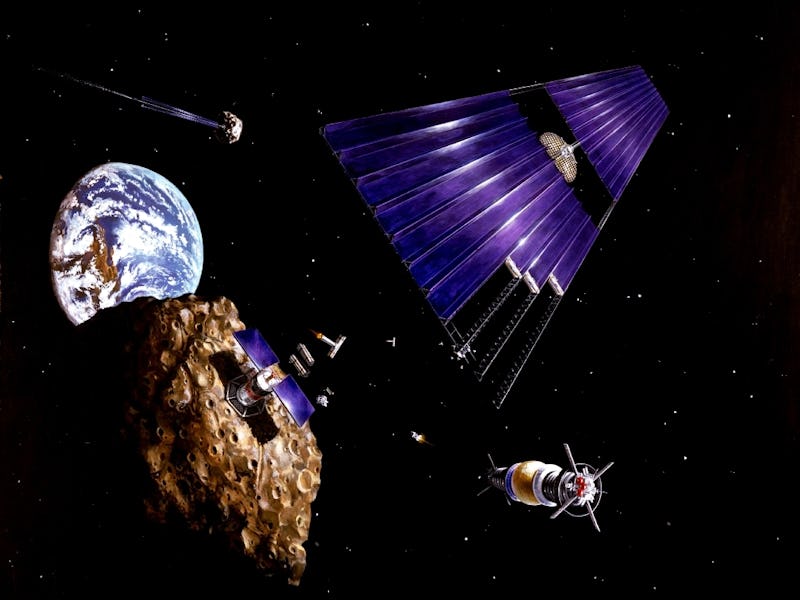How NASA Will Mine Frozen-Solid Asteroids for Usable Water
Gouging water out of drifting space rocks could determine the future of space travel.

When the words “asteroid” and “mining” are uttered in the same sentence, I think of Bruce Willis trying to save the world by digging a hole in a rock that’s hurtling towards Earth and bringing death and destruction. (Thanks, Michael Bay.) That’s not what most scientists are thinking. Instead, asteroid-mining could be a quick, cheap way to find water in space — water that could be used as a propellant to make it easier to jet around the solar system.
It’s an idea called the Asteroid Provided In-Situ Supplies plan, or Apis, first presented at a NASA Innovative Advanced Concepts session on September 2.
One of the biggest constraints preventing humans from traveling great distances is that you need to ensure the crew has everything they need — and that means everything. Food, water, oxygen, and every other supply that might be necessary in any scenario. All this weight means you need more energy and more fuel in order to get to your destination and safely return. And those last two resources aren’t exactly sitting around in big reserves everywhere you go.
Unless, that is, you’re using something else to get around. Like using water as a propellant.
Asteroids are a pretty well-established water source. Not necessarily in a form that’s easy to gather — it’s not just sitting in the rock in liquid form. It’s hard-solid ice. Apis proposes using a process called spalling to excavate the water as a gas by concentrating optical energy (like a highly powered, focused laser) deep into the rock, and ejecting the water out as a vapor that can be captured and stored.
Apis proposes harvesting almost 100 metric tons from near-Earth asteroids, and dropping it off at a storage location floating around in lunar orbit or elsewhere. You can read more in detail about how this works over at Space.com.
The most interesting thing about Apis, however, is that it could give NASA’s Asteroid Redirect Mission some actual purpose. In five years or so, NASA plans to be well underway to send a robot to a near-Earth asteroid, pick up a four-meter boulder, and drop it off into the moon’s orbit. This is in anticipation of the Orion EM-3 mission, where a crew would travel to the moon and study the boulder for…
Well that’s the problem — the mission has received flak for not really having a real objective. We already know a lot about asteroid rocks, and having astronauts undertake an expensive mission to study one just for fun doesn’t sound all that hot if you’re a taxpayer.
But what if we did this in the context of asteroid-mining? What if the purpose was to have astronauts interact directly with parts of an asteroid, to understand what it will be like when they have to start drilling into them? That makes a whole lot more sense — and would imbue the EM-3 with more significance.
Concept art for the Asteroid Redirect Mission
Moreover, the government already seems to have already stamped its approval. Earlier this year, Congress passed legislation designed to protect American mining companies undertaking asteroid-mining operations.
And if our politicians are able to come together and agree on something, you know it’s something special.